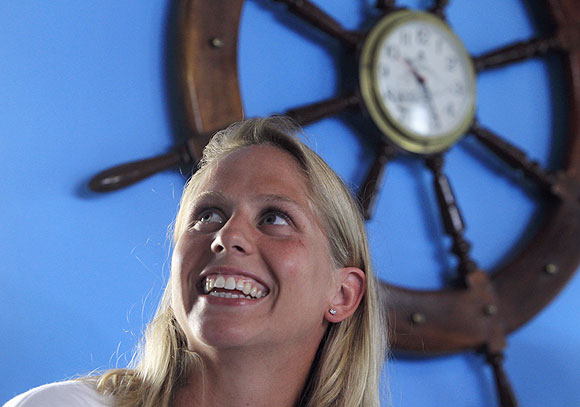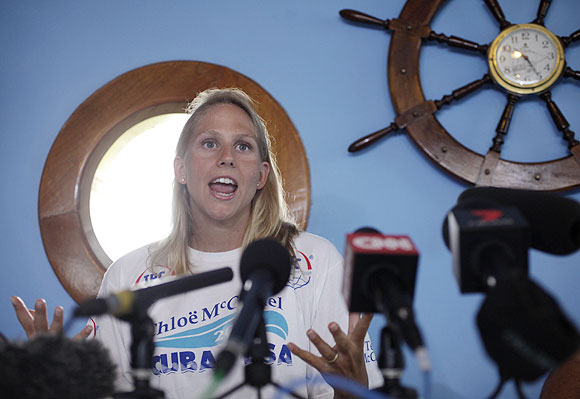 | « Back to article | Print this article |
Aus woman set to brave sharks on swim from Cuba to U.S.
With favourable weather predicted and a team of scientists on her side, Australian Chloe McCardel will set out on Wednesday to become the first person to make the 103-mile (166-km) swim between Cuba and the Florida Keys without a shark cage to protect her.
The treacherous body of water known as the Florida Straits is the Holy Grail for marathon swimmers and has been conquered only once, by Susie Maroney, also Australian, who used a protective cage at age 22 during her 1997 swim that glided on ocean currents and enabled her to make the journey in just 25 hours.
Since 2011, four unsuccessful, uncaged swims have been attempted, three by American Diana Nyad and one by Australian Penny Palfrey, and in all, 20 people have tried and failed, McCardel said in a press conference on Tuesday at the Hemingway Marina west of Havana. She'll take off from there on Wednesday morning.
"It's the hardest marathon swim in the entire world," the blond, well-tanned 28-year-old told reporters.
"This is like winning a World Cup in soccer or getting a world record and a gold medal at the Olympic Games, but it's possibly harder because no one has been able to do it," said McCardel, who works as a first aid trainer in Melbourne.
McCardel trains 50 weeks a year and has a record of accomplishment that includes two double crossings of the English Channel.
She'll use so-called English Channel marathon rules, meaning she can't touch the boats that will accompany her during what she estimates will be a 60-hour journey, hopefully ending on the shores of Key West, Florida.
Her biggest challenges during the swim, apart from fatigue, will be the poisonous jelly fish that float through the straits, the sharks, the man o'wars, waves and the powerful and unpredictable Gulf Stream, the mighty ocean current that flows west to east through the Florida Straits.
Aus woman set to brave sharks on swim from Cuba to U.S.
She and her husband, Paul, did a thorough study of past failed attempts to see what could be done differently. Based on their findings, they turned to science to increase the chance of success.
The swim is being attempted now because the box jelly fish, a particularly venomous species that has stung other swimmers, are less numerous in the Straits this time of year.
The moon is also in a new phase, meaning there is not much of it and therefore little moonlight, an abundance of which attracts jellyfish to the surface, where the swimmers are.
Like past swimmers, McCardel will be surrounded by an underwater electromagnetic field to keep sharks away.
Her support crew of 50 people includes a team of U.S.-based scientists, all experts on the Gulf Stream, to monitor the current and its constant changes as it flows toward the Atlantic Ocean.
They will create computer models to help the crew of the Sunluver, the 44-foot (13-meter) catamaran that will accompany McCardel, navigate around pitfalls that have doomed prior swims.
"We can foresee 10, 20, 30 kilometers ahead if there's anything we can avoid," McCardel said.
"If we can slightly change our course, we're less likely to get picked up by an eddy of the Gulf Stream and pushed in the wrong direction."
She said she also wants to use the swim to raise money for cancer research and cancer victims - donations can be made on her website www.chloemccardel.com - and to encourage better relations between the United States and Cuba, bitter ideological foes the past half century despite their geographical nearness.

© Copyright 2025 Reuters Limited. All rights reserved. Republication or redistribution of Reuters content, including by framing or similar means, is expressly prohibited without the prior written consent of Reuters. Reuters shall not be liable for any errors or delays in the content, or for any actions taken in reliance thereon.

